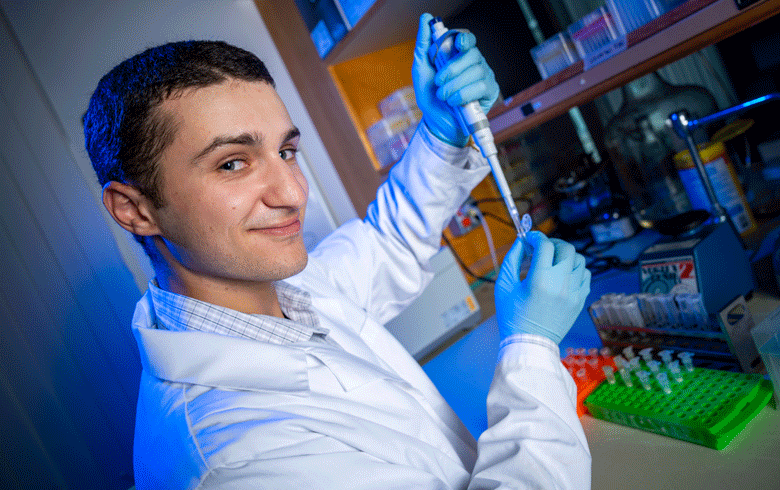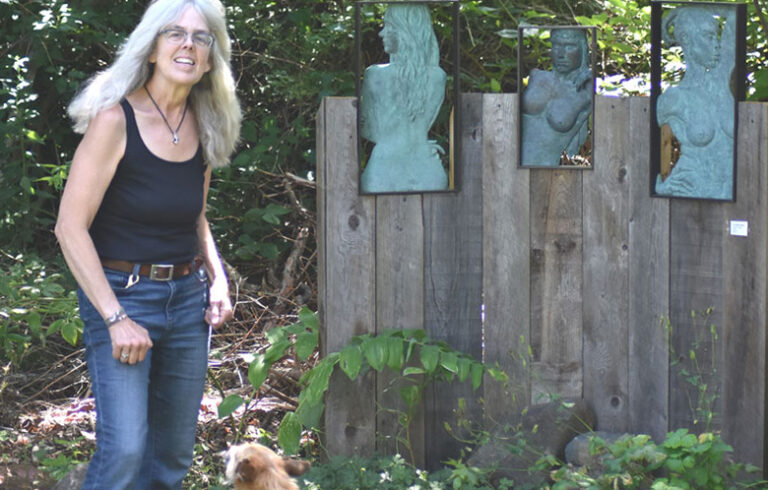Luke Goldman was working as an ocean rescue lifeguard on the Jersey Shore when he decided that he wanted to study ecology. He now is a marine protector of a different sort—a researcher at the forefront of using eDNA to try and save the Atlantic cod.
Goldman came to University of Maine, attracted to the ample natural spaces for a budding ecologist to study and explore, as well as the interdisciplinary nature of the Ecology and Environmental Sciences Program.
Goldman was first introduced to the concept of eDNA, where DNA in the environment is used to study the organisms living there, through a research learning experience course. The cutting-edge scientific technique immediately piqued his interest.
Marine scientists aren’t sure why, but one theory is that something is going wrong with their spawning.
“It’s a field in its infancy. It’s really only been around for ten years, and for more specific fields of study like marine biology, it’s only been used for like five years. It’s a frontier field in the sciences right now,” Goldman says.
At the end of the course, he asked about research opportunities to study eDNA and learned that Erin Grey, assistant professor of aquatic genetics and manager of the Grey Aquatics Lab, was seeking someone to work in the lab.
Goldman’s background in both ecology and molecular biology made him a great fit for the eDNA project, Grey said.
“You need to be able to understand both,” Grey says. “He had that unique combination.”
Goldman is working on a project that uses eDNA to determine cod spawning locations in the Gulf of Maine. Atlantic cod have been functionally extinct since the late 19th century due to overfishing and ocean warming.
The loss of cod was devastating economically and ecologically for the Gulf of Maine, and the populations haven’t been able to rebound like some other over-harvested species in the region once regulations were put in place. Marine scientists aren’t sure why, but one theory is that something is going wrong with their spawning. The exact locations and times of cod spawning are not well known in the Gulf of Maine, but may be easier to find with the help of eDNA.
“We don’t really know where they spawn,” Grey says. “We know a couple of areas, but it’s a big gulf and they spawn near the bottom. Since it can be easier to collect eDNA from water samples it might be easier for us to detect it.”
Goldman takes water samples from spawning cod in a controlled lab environment and uses a process called qPCR, or quantitative polymerase chain reaction, to pick out specific genes only found in cod. Through the process, primers and probes act like “selective magnets” for the tiny gene sequence, which are multiplied until they are plentiful enough to be detected.
Depending on how long the DNA takes to amplify, Goldman can figure out whether the sequence he is looking at is “background noise” or significant enough to be related to spawning. Cod release great quantities of DNA into the water when they’re spawning, after all.
Grey says Goldman’s work with eDNA is promising to detect cod in an area in general, but she also hopes to be able to involve eRNA into the project at some point. RNA are smaller subsets of DNA with specific instructions for, as Grey says, “doing something in the moment.”
A cod makes RNAs in eye cells for making eye proteins, for example, or scale cell RNAs for making scale proteins.
In the same vein, the cod material collected in water samples where the fish are releasing their eggs and sperm will exhibit specific RNA related to spawning.
“If we can find RNAs that are related to spawning, that would be game changing for the field,” Grey says.
Eventually, researchers aim to have fishermen collect samples and send them to a lab to conduct eDNA assays to find cod in the field.
Goldman hopes to continue using his eDNA skills to solve complex environmental and ecological problems. His eventual goal is to use eDNA to study fungi in soils, specifically how fungal communities have shifted in response to applications of synthetic fertilizer and the natural recovery that has occurred since fertilizer application has ceased.
“I’ve always been passionate about growing things and gardening and I want to have a farm some day. I took soil science last semester and I really fell in love.”
But first, he says, “We’ve got to save the cod.”





